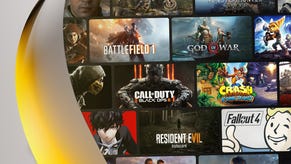It all ads up: Why devs should be rewarding players that watch promotions
Applovin MD Johannes Heinze discusses the missed opportunities surrounding in-game ads in the mobile space
This article was first printed in the GamesIndustry.biz Mobile Newsletter. To receive these special emails, sign up here.
Debates about the effective use of microtransactions have raged for so long in the mobile games industry that it's easy to assume this is the most assured route to reaping the hefty revenues enjoyed by the likes of Candy Crush Saga, Clash Royale, Pokémon Go and so on. But while in-app purchases can prove lucrative for developers, there's another source of income that can also pay dividends.
The concept of ads might be one that's off-putting to hopeful mobile studios seeking to ensnare an audience of millions. The assumption is that promotions for other titles can disrupt gameplay, frustrate users or perhaps even steal them away to a rival game. However, when integrated efficiently and wisely, these can prove to be just as valuable - if not more so - than those much-lauded microtransactions.

"The industry mainly considers games successful if they are high up the top grossing charts," Johannes Heinze, managing director for EMEA at mobile marketing platform AppLovin, tells GamesIndustry.biz. "We've noticed that a bunch of casual game developers managed to build very viable businesses by turning this equation upside down and mainly monetise through ads.
"Their games usually have a very simple but addictive game design, they appeal to a broad audience, and they have high, long-term retention rates that enable them to consistently monetise their users by cross-promoting them to other games. The best of them even end up with lifetime values that are high enough to buy users at scale and end up high up the top free charts."
The use of ads in mobile games has changed dramatically over the years. Intrusive static banner ads are rarely used now, with video ads now very much the norm. While these might seem to be even more disruptive, often unskippable for 30 seconds (a long time if you were just in 'the zone' on your endless runner of choice), many developers now opt to reward players for allowing the ad to run. Rewards can range from in-game currency to power-ups, and not implementing this is something Heinze believes is one of the biggest opportunities a lot of developers are missing.
"Developers should try not to link ad rewards to currency but rather some sort of one-time consumable like boosts, speed-ups, and revives"
"Often we see studios failing to implement rewarded video - the dominant format for ad monetisation - in an optimal fashion," he says. "If there is any progression in the game, it's important to adjust payout of the packages in order to make sure that the reward continues to be relevant within the game. Also, game developers should try not to link the reward to currency but rather some sort of one-time consumable like boosts, speed-ups, and revives."
There is another form of in-game advertising that is becoming more prominent: playable ads. These bite-sized mini-games essentially work as interactive banner ads and aim to be less disruptive than videos or static promotions - after all, the user is still technically playing something. Initial versions were a little ropey, but more and more are being rolled out now that effectively convey the gameplay of the title they are promoting.
"Playable ad units are definitely on the rise and they are getting better and better. They basically give the user a first glimpse on what the product is all about"
"Playable ad units are definitely on the rise and they are getting better and better," says Heinze. "They basically give the user a first glimpse on what the product is all about and build a smooth bridge from one game to another. Users interact with the ads and a high percentage also download the app.
"Playables are part of a bigger trend that focuses more on the actual content of the game. Instead of having fancy CGI or lofty taglines, more and more video ads are showing the actual gameplay, in a tutorial-like fashion. The marketplace is very crowded, therefore it becomes increasingly important to demonstrate the look and feel of the game and prepare the user for what's waiting in the app."
None of this means that developers should abandon the tried and tested in-app purchases that have long since established themselves as the bedrock of the free-to-play model. Heinze says these, in combination with video ads, will "continue to be the gold standard for monetisation", but it's nonetheless important for developers to think about how their freemium game will use advertising effectively in order to make up for the number of players that might not be inclined to spend their hard-earned cash.
"The best way to approach this is to think about the ad integration early on in the development cycle, and let the ads become a part of your game that supports your mechanics," suggests Heinze. "Rewarded ads can be a great way to extend the session length - for example, granting the user another life after dying in an endless runner, offering the user a specific boost before they start a battle for watching an ad, or even utilising ads as a retention tool as some of the clickers are doing. These 'natural' integrations perform very well."

-(1)_16x9.png?width=291&height=164&fit=crop&quality=80&format=jpg&auto=webp)






